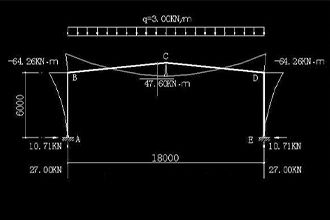Load analysis is a crucial step in the design of steel structures and is usually carried out according to the following steps:

1. Determination of design loads: First of all, it is necessary to determine the design loads applicable to the specific project, which includes static loads (e.g., self-weight of the building, use loads, snow loads, etc.) and dynamic loads (e.g., wind loads, seismic loads, etc.). The determination of design loads usually follows the relevant national or regional codes and standards.
2. Load combination: According to the specification requirements, different loads are combined by a certain combination to form the design load combination. These combinations may include permanent load combinations, variable load combinations, seismic load combinations, etc.
3. Structural analysis: Use appropriate structural analysis methods (e.g. finite element analysis, frame analysis, etc.) to analyze the loads on the steel structure. In the analysis process, factors such as the geometry, material properties, and boundary conditions of the structure need to be considered to determine the stress on the structure under various load combinations.
4. Stress calculation: According to the stress situation of the structure, the stresses of each member in the structure are calculated. This includes axial force, bending moment, shear force, etc., which can be calculated using classical mechanical principles and formulas, or with the help of professional structural analysis software.
5. Checking: The calculated stresses in each member are checked to ensure that they do not exceed the allowable stresses in the material. If the stress of some members exceeds the allowable value, it may be necessary to redesign the structure or take reinforcement measures.
6. Stability analysis: Stability problems may occur when the steel structure is subjected to loads, such as local buckling and overall instability. Therefore, stability analysis is required to ensure that the structure can remain stable under various load combinations.
7. Vibration analysis: If the steel structure is in an environment susceptible to vibration disturbance, vibration analysis is also required to assess the vibration response of the structure and take appropriate control measures.
Through the above steps, the designer can carry out a comprehensive load analysis of the steel structure to ensure its safe and stable operation under various working conditions.











 About Us
About Us 2024-03-15
2024-03-15


